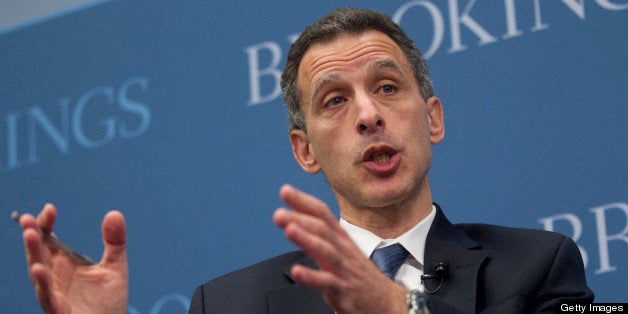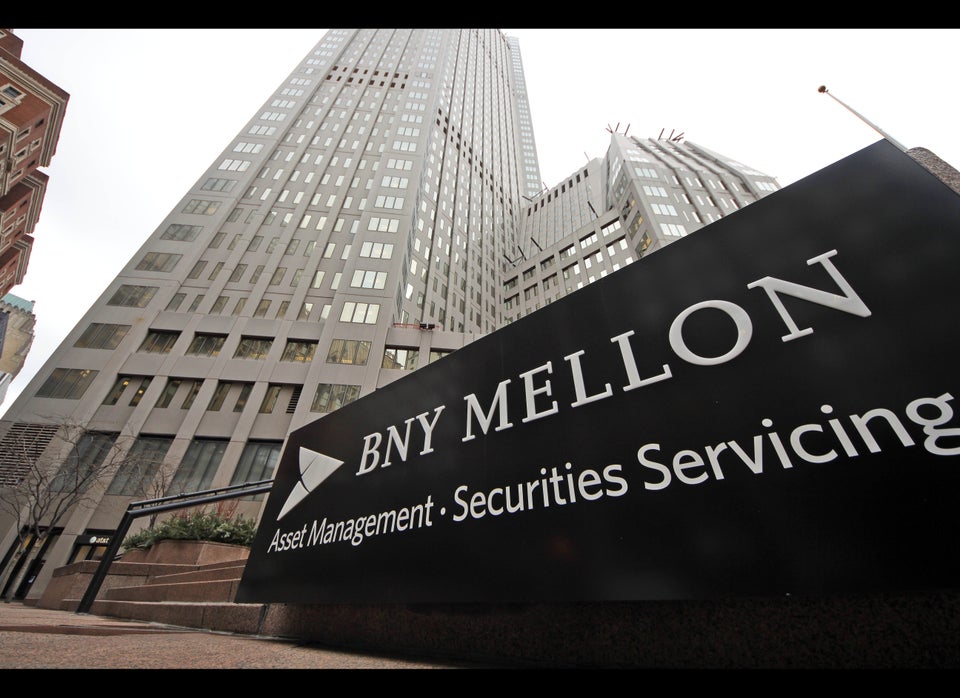
BOSTON -- A top Federal Reserve official has raised the specter of higher capital requirements for leading banks beyond those agreed internationally, joining a small yet growing group of Washington policymakers agitating for more stringent regulation of big banks.
Jeremy Stein, a Fed governor who previously served in the Obama administration, said Wednesday that the capital surcharge to be imposed on the largest and most complex financial groups as part of the Basel III reforms should serve as a "starting point."
The global banking watchdogs from 27 countries with major financial centers that comprise the Basel Committee on Banking Supervision have agreed to require big banks to fund themselves with more equity, with financial groups now expected to meet a tougher post-crisis ratio of 7 percent loss-absorbent common equity to their assets, adjusted for risk.
The Financial Stability Board, a related international panel of bank regulators, has deemed 28 large banks to be “global systemically important financial institutions,” or G-SIFIs, based on the risk their potential failure would pose to the broader economy. The board has required these big and complex banks to fund themselves with additional equity, equal to between 1 percent and 2.5 percent of their risk-weighted assets, on top of the Basel III minimums.
The FSB left open the possibility that some banks may even be required to fund themselves with an additional 3.5 percent of equity relative to risk-weighted assets.
It appears that those surcharges on the largest and most complex banks may be too low, according to Stein, one of seven Fed governors.
“If after some time it has not delivered much of a change in the size and complexity of the largest of banks, one might conclude that the implicit tax was too small, and should be ratcheted up,” he said in prepared remarks.
That possibility -- “ratcheted up” capital requirements -- is likely to fuel further concern among top bank executives who already are contending with tougher requirements and limits on activities and remuneration.
U.S. regulators have not yet proposed the domestic surcharge for large banks. Scott Alvarez, Fed general counsel, told Congress on Tuesday that the regulator was still in discussions with its international counterparts, leaving open the possibility that the Fed may require even tougher rules than those agreed internationally.
Adding to the uncertainty, the International Monetary Fund warned Wednesday in its Global Financial Stability Report that investors remain “concerned” about the opacity of big banks and that “dealing with too-big-to-fail banks remains a key issue.”
Stein’s call and the IMF’s warning add to an ongoing debate in Washington over how policymakers should address the risks posed by banks deemed “too big to fail.”
Some policymakers at the Fed and Federal Deposit Insurance Corporation, as well as legislators in Congress, want to break them up. Others wish to impose capital requirements that are so stringent that they would effectively force big banks to shrink. Some officials at the Treasury also favor forcible restructurings or shrinking large financial groups.
Stein joins an increasingly vocal group of policymakers desiring further action, which comes as the debate over too-big-to-fail has grown louder in recent months as officials concede that the phenomenon has not yet ended.
Officials including Tom Hoenig, FDIC vice chairman; Jeremiah Norton, FDIC director; and Dan Tarullo, Fed governor and the central bank official leading its regulatory efforts, have all either suggested bank breakups, size caps, or tougher requirements on the biggest banks.
Dodd-Frank, the 2010 law that reformed U.S. financial regulation, was written in part to forever end the perception that the U.S. government would rescue failing big banks out of fear that allowing them to fail would cause a financial panic. At the time, the Obama administration trumpeted the law as ending too-big-to-fail.
Ben Bernanke, Fed chairman, said last month that too-big-to-fail is a "major issue" that is not yet "solved and gone".
"It’s still here," he added, "but there’s a lot of work in train" that may eventually end it. "I hope that we’ll make progress against too-big-to-fail, because I agree ... 100 percent that it’s a real problem and needs to be addressed if at all possible," Bernanke said.
As big banks continue to benefit from higher credit ratings on the presumption that the government will bail them out in times of crisis, allowing them to borrow more cheaply and reap outsized profits because their creditors will always be made whole, officials in Washington have begun to coalesce around the idea of further action.
Banks borrow money, raise capital from shareholders or retain earnings in order to fund the assets on their balance sheets, like loans and securities. Small banks typically rely on capital and deposits -- a form of borrowing -- in order to make loans to households and business. But big banks also borrow from investors and other financial institutions in order to fuel asset growth.
It’s generally cheaper for banks to borrow funds than to raise fresh capital, experts have said, flattering profits and banker remuneration.
The fact that big banks borrow funds at a cheaper rate relative to their smaller peers has ignited a fierce debate in Washington, as small banks cry foul and policymakers consider tougher rules to end the taxpayer-provided subsidy.

